您现在的位置是:首页 >学无止境 >04-Vue技术栈之组件化编程网站首页学无止境
04-Vue技术栈之组件化编程
简介04-Vue技术栈之组件化编程
目录
1、模块与组件、模块化与组件化
1.1 模块
- 理解: 向外提供特定功能的 js 程序, 一般就是一个
js 文件 - 为什么: js 文件很多
很复杂 - 作用: 复用 js,
简化js 的编写, 提高 js 运行效率
1.2 组件
- 理解: 用来实现局部(特定)功能效果的
代码集合(html/css/js/image……) - 为什么: 一个界面的功能
很复杂 - 作用: 复用编码,
简化项目编码,提高运行效率
1.3 模块化
当应用中的 js 都以模块来编写的, 那这个应用就是一个
模块化的应用。
1.4 组件化
当应用中的功能都是多组件的方式来编写的, 那这个应用就是一个
组件化的应用。
1.5 传统方式编写应用
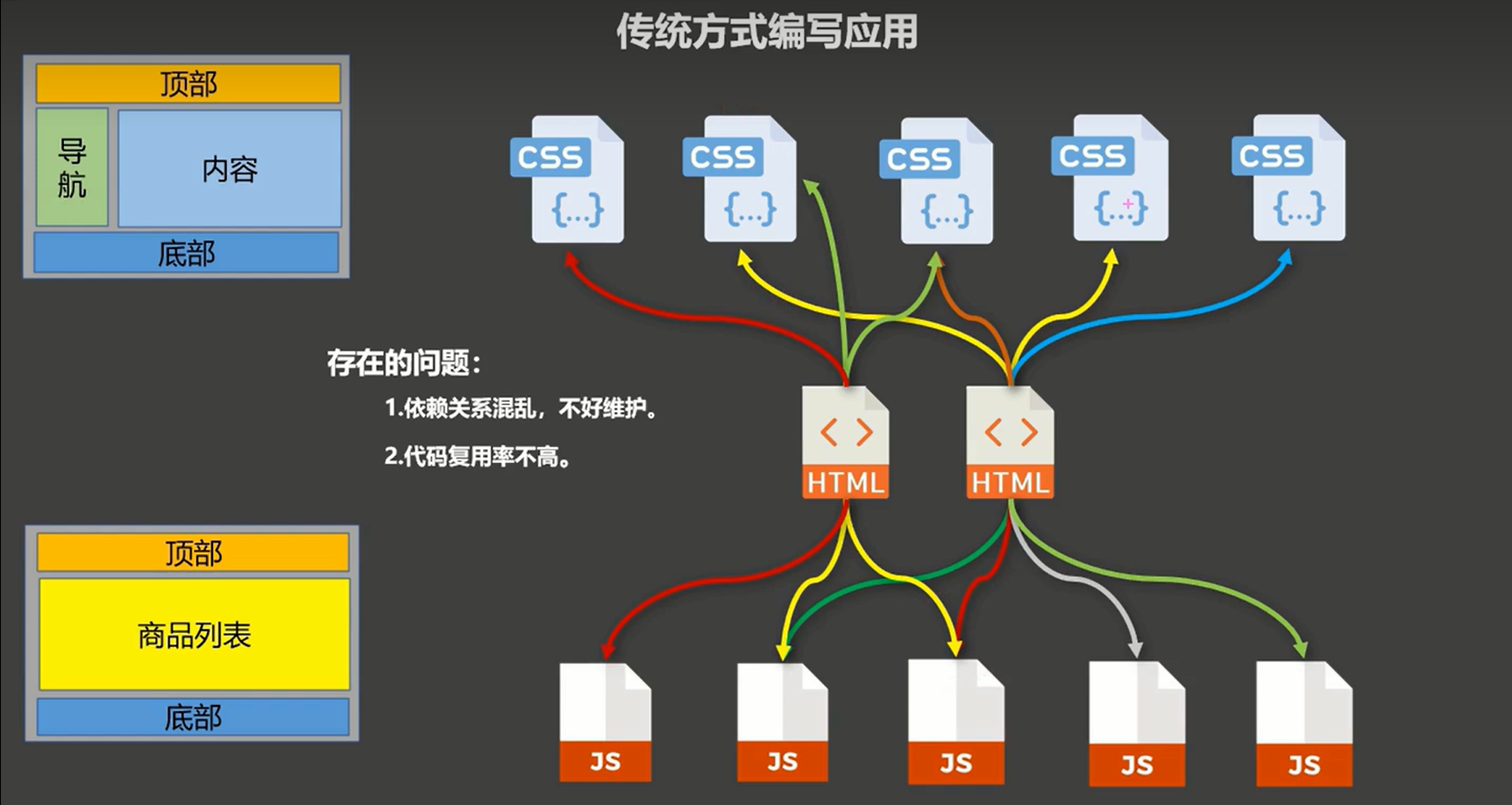
1.6 组件方式编写应用
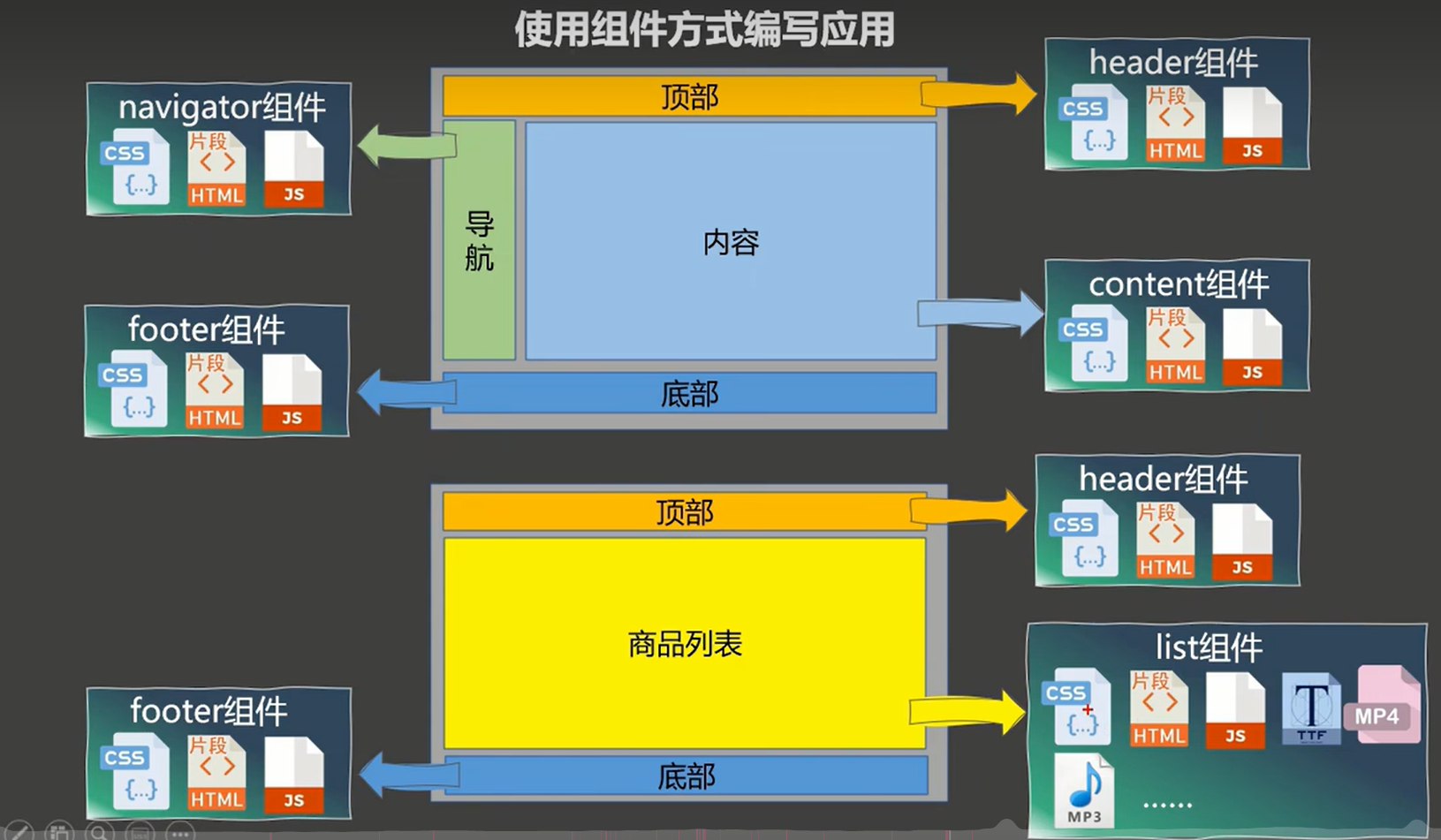
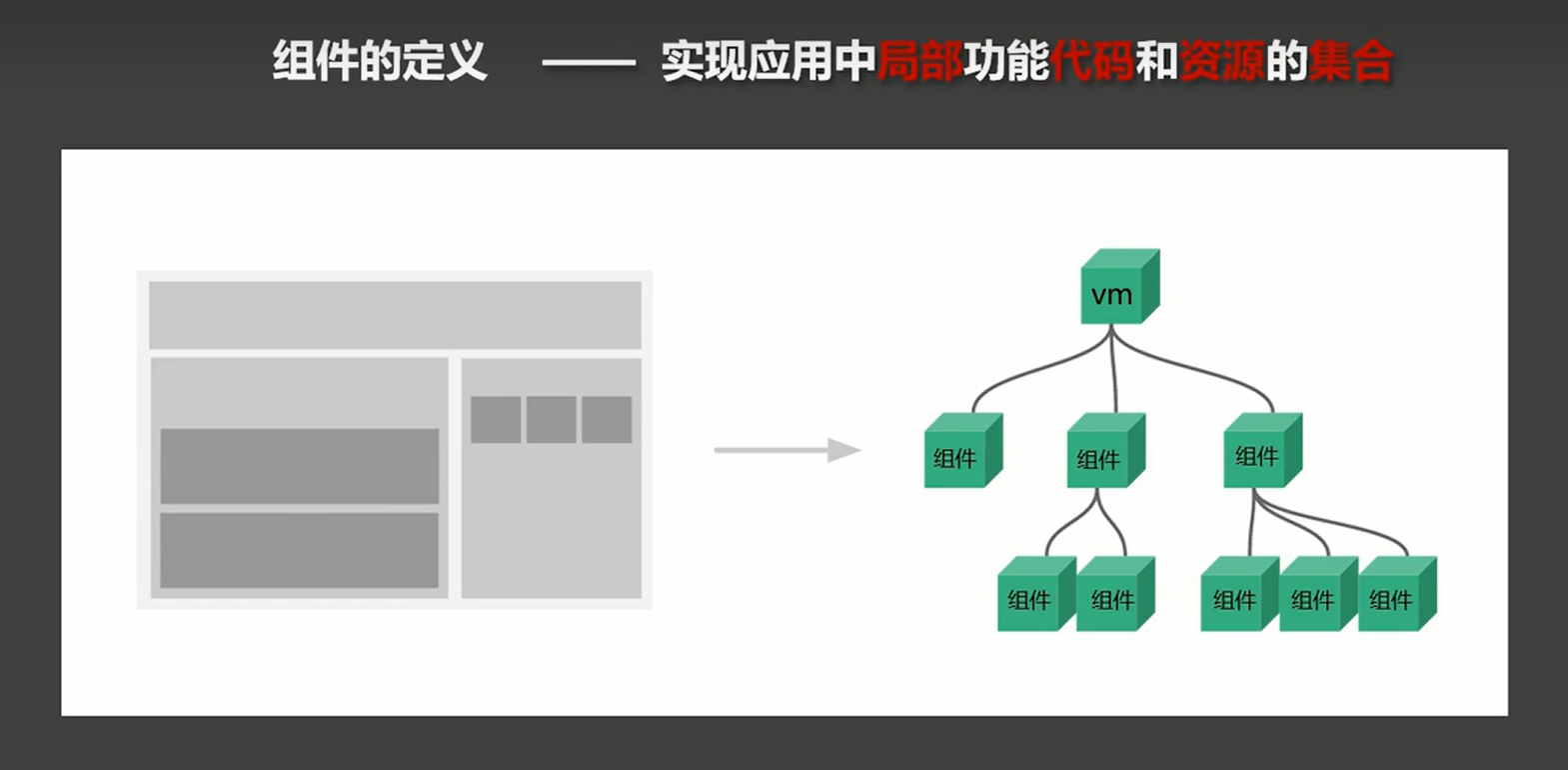
2、非单文件组件
2.1 基本使用
Vue中使用组件的三大步骤:
一、定义组件(创建组件)
二、注册组件
三、使用组件(写组件标签)
-
如何定义一个组件?
使用Vue.extend(options)创建,其中options和new Vue(options)时传入的那个options几乎一样,但也有点区别;
区别如下:
1.el不要写,为什么? ——— 最终所有的组件都要经过一个vm的管理,由vm中的el决定服务哪个容器。
2.data必须写成函数,为什么? ———— 避免组件被复用时,数据存在引用关系。
备注:使用template可以配置组件结构。 -
如何注册组件?
1.局部注册:靠
new Vue的时候传入components选项
2.全局注册:靠Vue.component('组件名',组件) -
编写组件标签:
<school></school>
代码示例:
<!-- 准备好一个容器-->
<div id="root">
<hello></hello>
<hr>
<h1>{{msg}}</h1>
<hr>
<!-- 第三步:编写组件标签 -->
<school></school>
<hr>
<!-- 第三步:编写组件标签 -->
<student></student>
</div>
<div id="root2">
<hello></hello>
</div>
</body>
<script type="text/javascript">
Vue.config.productionTip = false
//第一步:创建school组件
const school = Vue.extend({
template: `
<div class="demo">
<h2>学校名称:{{schoolName}}</h2>
<h2>学校地址:{{address}}</h2>
<button @click="showName">点我提示学校名</button>
</div>
`,
// el:'#root', //组件定义时,一定不要写el配置项,因为最终所有的组件都要被一个vm管理,由vm决定服务于哪个容器。
data() {
return {
schoolName: '帝皇宫',
address: '玄天大陆'
}
},
methods: {
showName() {
alert(this.schoolName)
}
},
})
//第一步:创建student组件
const student = Vue.extend({
template: `
<div>
<h2>学生姓名:{{studentName}}</h2>
<h2>学生年龄:{{age}}</h2>
</div>
`,
data() {
return {
studentName: '东方青云',
age: 18
}
}
})
//第一步:创建hello组件
const hello = Vue.extend({
template: `
<div>
<h2>你好啊!{{name}}</h2>
</div>
`,
data() {
return {
name: 'Tom'
}
}
})
//第二步:全局注册组件
Vue.component('hello', hello)
//创建vm
new Vue({
el: '#root',
data: {
msg: '你好啊!'
},
//第二步:注册组件(局部注册)
components: {
school,
student
}
})
new Vue({
el: '#root2',
})
</script>
2.2 几个注意点
-
关于组件名:
-
一个单词组成:第一种写法(
首字母小写):school
第二种写法(首字母大写):School -
多个单词组成:第一种写法(
kebab-case命名):my-school
第二种写法(CamelCase命名):MySchool (需要Vue脚手架支持)
备注:
(1).组件名尽可能回避HTML中已有的元素名称,例如:h2、H2都不行。
(2).可以使用name配置项指定组件在开发者工具中呈现的名字。 -
-
关于组件标签:
- 第一种写法:
<school></school>- 第二种写法:
<school/>//不用使用脚手架时,<school/>会导致后续组件不能渲染。
- 一个简写方式:
const school = Vue.extend(options)可简写为:const school = options
2.3 组件的嵌套
- 代码示例:
<body>
<!-- 准备好一个容器-->
<div id="root">
</div>
</body>
<script type="text/javascript">
Vue.config.productionTip = false //阻止 vue 在启动时生成生产提示。
//定义student组件
const student = Vue.extend({
name: 'student',
template: `
<div>
<h2>学生姓名:{{name}}</h2>
<h2>学生年龄:{{age}}</h2>
</div>
`,
data() {
return {
name: '东方青云',
age: 18
}
}
})
//定义school组件
const school = Vue.extend({
name: 'school',
template: `
<div>
<h2>学校名称:{{name}}</h2>
<h2>学校地址:{{address}}</h2>
<student></student>
</div>
`,
data() {
return {
name: '帝皇宫',
address: '云天大陆'
}
},
//注册组件(局部)
components: {
student
}
})
//定义hello组件
const hello = Vue.extend({
template: `<h1>{{msg}}</h1>`,
data() {
return {
msg: '欢迎来到帝皇宫学习!'
}
}
})
//定义app组件
const app = Vue.extend({
template: `
<div>
<hello></hello>
<school></school>
</div>
`,
components: {
school,
hello
}
})
//创建vm
new Vue({
template: '<app></app>',
el: '#root',
//注册组件(局部)
components: { app }
})
</script>
- 嵌套关系:
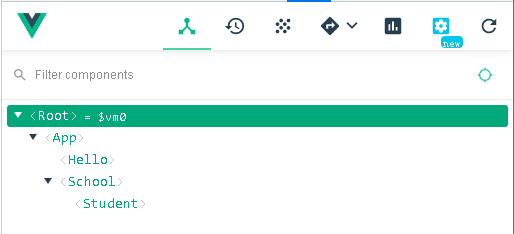
2.4 VueComponent
关于VueComponent:
- school组件本质是一个名为
VueComponent的构造函数,且不是程序员定义的,是Vue.extend生成的。 - 我们只需要写
<school/>或<school></school>,Vue解析时会帮我们创建school组件的实例对象,即Vue帮我们执行的:new VueComponent(options)。 - 特别注意:每次调用
Vue.extend,返回的都是一个全新的VueComponent!!!! - 关于this指向:
(1) 组件配置中:
data函数、methods中的函数、watch中的函数、computed中的函数 它们的this均是【VueComponent实例对象】。
(2) new Vue(options)配置中:
data函数、methods中的函数、watch中的函数、computed中的函数 它们的this均是【Vue实例对象】。 - VueComponent的实例对象也可称之为:
组件实例对象。
2.5 一个重要的内置关系
- 一个重要的内置关系:
VueComponent.prototype.__proto__ === Vue.prototype - 为什么要有这个关系:让
组件实例对象可以访问到Vue原型上的属性、方法。
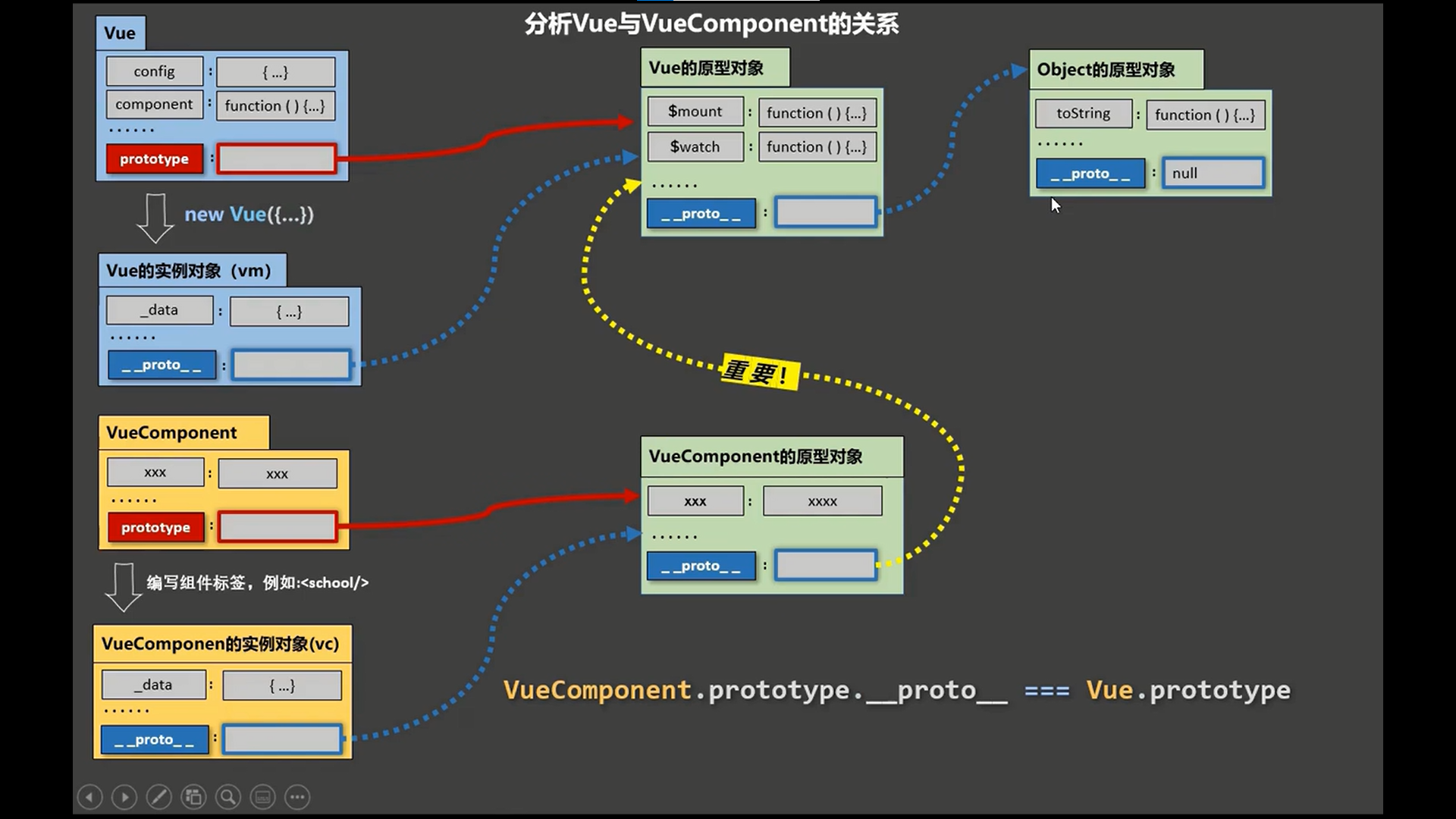
2.6 总结
- 模板编写没有提示
- 没有构建过程, 无法将 ES6 转换成 ES5
- 不支持组件的 CSS
- 真正开发中几乎不用
3、单文件组件
3.1 一个.vue 文件的组成(3 个部分)
1. 模板页面
<template>
页面模板
</template>
2. JS 模块对象
<script>
export default {
data() {
return {};
},
methods: {},
computed: {},
components: {},
};
</script>
3. 样式
<style>
样式定义
</style>
3.2 基本使用
- 引入组件
- 映射成标签
- 使用组件标签
风语者!平时喜欢研究各种技术,目前在从事后端开发工作,热爱生活、热爱工作。






 U8W/U8W-Mini使用与常见问题解决
U8W/U8W-Mini使用与常见问题解决 QT多线程的5种用法,通过使用线程解决UI主界面的耗时操作代码,防止界面卡死。...
QT多线程的5种用法,通过使用线程解决UI主界面的耗时操作代码,防止界面卡死。... stm32使用HAL库配置串口中断收发数据(保姆级教程)
stm32使用HAL库配置串口中断收发数据(保姆级教程) 分享几个国内免费的ChatGPT镜像网址(亲测有效)
分享几个国内免费的ChatGPT镜像网址(亲测有效) Allegro16.6差分等长设置及走线总结
Allegro16.6差分等长设置及走线总结